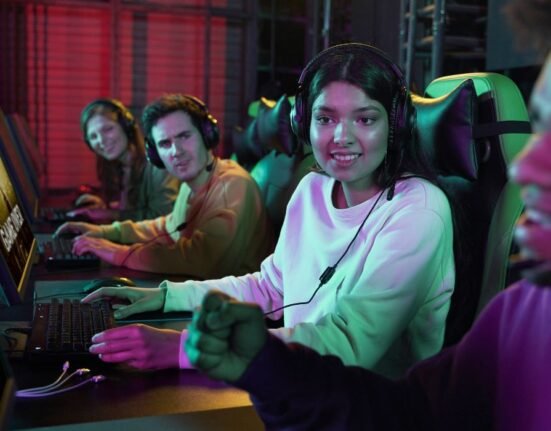Creativity and intelligence have been the points of interest for decades among psychologists, teachers, and researchers. Both these complex constructs empower humankind to reach its full potential. While intelligence is the wellspring of many cognitive skills in the guise of problem-solving, memory, and reasoning, creativity generates new and useful ideas. This knowledge not only contributes to the understanding of human capabilities but also has implications for educational and workplace innovation and personal development.
Defining Intelligence and Creativity
What is Intelligence?
The ability of human beings to learn, think, and solve problems. Intelligence is the acquisition, comprehension, and application of knowledge and abilities. It includes numerous cognitive processes involving reasoning, solving problems, remembering, learning, and adjusting to changes. It makes an individuals rational in their thoughts, process data, make judgments, or develop solutions. Intelligence can, however, also involve emotional intelligence, or the ability to understand and control one’s emotions, and creative intelligence, or the capacity to think outside the box and produce original ideas.
Read More: Understanding Spearman’s Theory of Intelligence
What is Creativity?
Creativity is out-of-the-box thinking. It introduces new ideas or solutions that are both practical and unique. There are diverse expressions of creativity ranging from artistic, innovative problem-solving, to scientific discovery.
Read More: The Psychology Behind Creativity
Theories of Creativity and Intelligence
Several theories have been put forward in an attempt to describe how creativity and intelligence are related. Some of the most influential perspectives are described below:
1. Threshold Theory
Threshold theory holds that they both are correlated only to the point where an individual’s threshold lies. From there, greater intelligence will not very much correlate with creativity. People with an IQ higher than 120, for example, show varying levels of creativity; other factors must, therefore, also have a significant bearing on the creative outcome.
While having the necessary minimal levels of intelligence helps in processing, solving, and understanding abstract concepts, which is a preposterous basis for creativity itself, high intelligence on its own does not relate whatsoever to high creativity for reasons of dependence on divergent thinking, originality, and intrinsic motivation.
- Implication: This theory defines why highly intelligent people do not at all come forward to produce impressive performances in creative work and vice versa.
2. Triarchic Theory of Intelligence
Robert Sternberg defines this theory as consisting of three components. These are analytical, creative, and practical intelligence. Creativity is the most important part of intelligence as it explains that it highlights the innovating and adaptive ability. Creativity is one form of intelligence as proposed by Sternberg that is different but related to analytic intelligence. The combination of these types of intelligence shall be innovative and practical.
Read More: Triarchic theory of intelligence
3. Investment Theory of Creativity
Sternberg and Lubart in conceptualizing the investment theory of creativity explain that creativity is a form of “investment” market whereby ideas are bought “at different prices.” These people then “sell high” while encouraging others to accept their viewpoints. This is because intelligence determines not only which ideas to pursue but also how to say their value. However, being bold to take risks and challenge norms is equally an important feature of creativity.
4. Multiple Intelligences Theory
Howard Gardner’s theory of multiple intelligence believes that creativity is a constituent of different kinds of intelligence, which comprises musical, bodily-kinesthetic, and spatial intelligence. According to his theory, the current IQ tests have to date failed to capture the whole gamut of human abilities. The outcome is creativity wherever unique intelligence is applied. A person with a high spatial intelligence might be good in architecture or art, while a person with a high linguistic intelligence might have fantastic poetry or literature. Creativity is not, as per traditional parameters of intelligence like IQ, but is, in fact, domain-specific.
5. Dual-Process Theories
The theories say that human cognition is based on two systems :
System 1: Rapid, instinctual, and spontaneous (associated with creativity)
System 2: Slow, deliberative, analytical (tied to intelligence).
Naturally, it should be that the interaction of creativity and intelligence occurs if both systems are well-balanced. A scientist will use System 2 to meticulously test a hypothesis while System 1 will provide him with inspiration and innovative ideas.
- Implication: Much of the creative problem-solving often needed would require that one’s potential be able to oscillate between divergent thinking (associated with System 1) and convergent thinking (associated with System 2).
Read More: 10 Subtle Signs of Highly Creative People, According to Psychology
Components of Creativity and Intelligence
They both share some common components but also each has unique components that set them apart.
1. Convergent Thinking vs. Divergent Thinking
Intelligence is often associated with convergent thinking which is arriving at a single correct solution to a problem. Creativity, however, has been identified to relate to divergent thinking which means several ideas or solutions for an explicit problem.
2. Knowledge and Domain Expertise
Intelligence further leads to the learning of knowledge which acts as the base for creative creations. However, creativity stretches out beyond knowledge. Creativity should take the fusion of ideas to a new plane of action.
Read More: The Multifaceted Mind: Understanding Theories of Intelligence
Brain Regions Dominant for Creativity and Intelligence
They both are not in one source; they are controlled by various areas of the brain. The regulatory process is controlled by each hemisphere. The right hemisphere is responsible for creativity, as it deals with imagination, intuition, and visual-spatial thinking. Provides divergent thinking, which means novel ideas are created due to several novel ideas. Creativity involves the main areas in this major area: one is the right prefrontal cortex, which lets it allows novel ideas to be created and the other is the right temporal lobe involving the processing of emotions and patterns hence enabling work artistically and musically.
On the other hand, intelligence is an activity of the left hemisphere but more related to logic problem-solving and language. Decision-making and reasoning are found in the left prefrontal cortex; math and logic computation is at the parietal lobe; and memory and retrieval of knowledge are done in the hippocampus. It makes possible collaboration of two hemispheres to coordinate both logical and creative functions of thinking when there is problem-solving or invention.
Read More: How to Train Your Creativity (Even If You Think You’re Not Creative)
Examples of the Link Between Creativity and Intelligence
Albert Einstein intelligent, epitomized how creativity and intelligence intertwined. For Einstein, creativity was key to intellectual breakthroughs. Many artists are like Pablo Picasso: they carry high spatial intelligence with incredible creativity in their work, which never goes old.
Closing remarks
They both are generally connected but are not necessarily together. It has been research proven that one can be incredibly creative and fail an intelligence test, or vice versa. For instance, some artists or musicians may not have normal academic intelligence but possess some extraordinary creative talent. A person with a high IQ may not be creative if they lack the ability or the will to think unconventionally.
They are two constructs that complement each other in a multifaceted relationship. The former provides a means of generating novel ideas and solutions, while the latter gives the cognitive means of understanding and analyzing issues. Nurturing these two qualities enables them to manifest in full expression for their good and make a meaningful contribution to education and innovation, art and science, and all other avenues of life.
Read More: The Difference Between Emotional Intelligence (EQ) and Intelligence Quotient (IQ)
FAQs
1. What are the differences in intelligence and creativity?
The difference between intelligence and creativity is very simple- Intelligence is learning, reasoned, problem-solving, and ability, but creativity is when one is thinking out-of-the-box conceiving new things and solving problems in novel ways.
2. Is creativity part of intelligence?
Creativity plays an integral role in intelligence, especially in problem-solving and innovation. However, despite being deeply interrelated, the two depend on entirely different cognitive processes.
3. Can someone be creative and not intelligent?
Maybe it is possible for a person to be really intelligent and have very good reasoning and problem-solving capabilities but lack creativity. Structured and logical thinking usually characterizes intelligence, whereas flexibility and innovativeness characterize creativity.
4. Which parts of the brain control intelligence and creativity?
The left hemisphere, known for representing logical reasoning and analytical thought, controls intelligence. The right hemisphere, responsible for imagination and divergent thinking, primarily drives creativity. Both hemispheres collaborate to enable problem-solving and innovation.
References +
The Relationship between Intelligence and Creativity | Psychology Paper example. (2024, December 29). PsychologyWriting. https://psychologywriting.com/the-relationship-between-intelligence-and-creativity/
Theories of creativity. (n.d.). Creativity Today. https://moderncreativity.weebly.com/theories-of-creativity.html
Skillicorn, N. (2022, February 18). Do you need to be intelligent to be creative? The threshold theory. Idea to Value https://www.ideatovalue.com/crea/nickskillicorn/2022/01/do-you-need-to-be-intelligent-in-order-to-be-creative-the-threshold-theory/#:~:text=All%20the%20the%20experiments%20showed,improve%20creativity%20more%20than%20intelligence
Dance, J. (2023, September 5). Creativity is the Highest Form of Intelligence – Fresh Consulting. Fresh Consulting. https://www.freshconsulting.com/insights/blog/creativity-is-the-highest-form-of-intelligence/#:~:text=Creativity%20is%20the%20highest%20form%20of%20intelligence%20because%20it%20goes,and%20extends%20into%20knowledge%20creation
https://study.com/academy/lesson/the-relationship-between-intelligence-creativity.html
Creativity as the new intelligence: Redefining human potential. (n.d.). https://samgoldstein.com/resources/articles/general/2024/creativity-as-the-new-intelligence.aspx#:~:text=Creative%20individuals%20often%20combine%20seemingly,possibilities%20that%20others%20might%20miss













Leave feedback about this